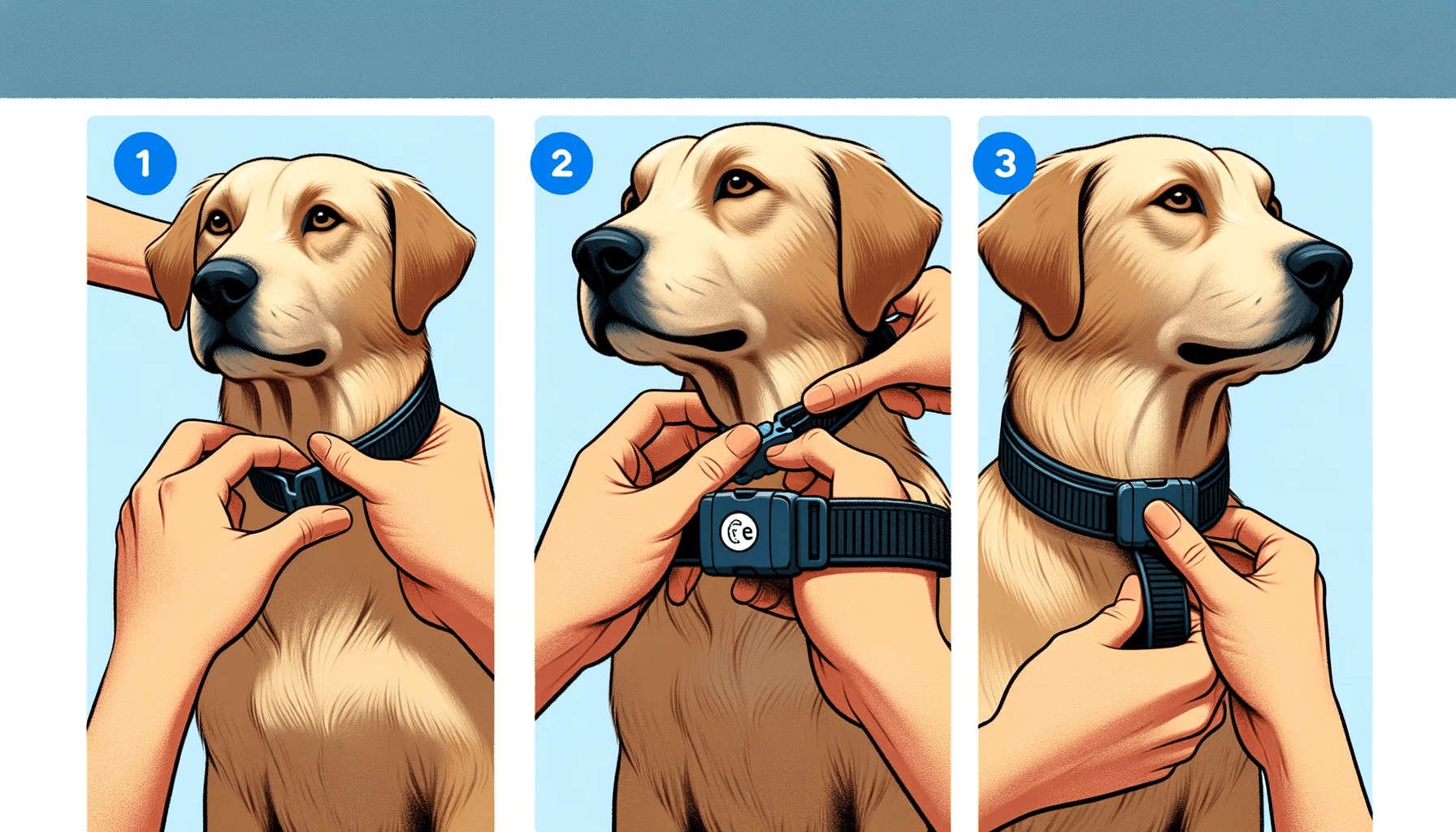Dog whispering, also known as canine communication, is a unique approach to understanding and interacting with dogs. This method, developed by professional trainers and behaviorists, focuses on building a deep bond and trust with dogs, enabling effective communication and behavior modification.
By utilizing non-verbal cues, body language, and positive reinforcement techniques, dog whisperers can address common behavior issues and create harmonious relationships between dogs and their owners.
In this article, we will explore the origins, techniques, benefits, and practical application of dog whispering.
Key Takeaways
- Dog whispering originated in the early 1990s and was popularized by Cesar Millan.
- Understanding canine behavior and psychology is vital for successful dog whispering.
- Calm assertiveness and maintaining a calm and confident demeanor are important techniques in dog whispering.
- Trust and connection are crucial in dog whispering, and building trust paves the way for effective training and behavior modification.
The Origins of Dog Whispering
The origins of dog whispering can be traced back to the early 1990s when a professional dog trainer, Cesar Millan, popularized the concept through his television show and books. Millan, originally from Mexico, gained recognition for his unique approach to dog training, which focused on understanding and communicating with dogs on a deeper level. He believed that dogs should be treated as pack animals and that their behavior can be influenced by establishing a calm and assertive energy.
Millan’s television show, ‘Dog Whisperer with Cesar Millan,’ debuted in 2004 and quickly gained a large following. In each episode, Millan would work with dogs exhibiting various behavioral issues and demonstrate his techniques for correcting them. His methods emphasized the importance of leadership, exercise, and discipline in establishing a balanced relationship between dogs and their owners.
As Millan’s popularity grew, so did the interest in the concept of dog whispering. Many trainers and dog owners began adopting his techniques and applying them to their own dogs. The term ‘dog whispering’ became synonymous with Millan’s approach, and it has since become a widely recognized method of dog training.
Understanding Canine Behavior
A comprehensive understanding of canine behavior is essential for effective dog whispering. Dog whisperers, or trainers, must be able to interpret and respond to the body language and psychology of dogs in order to establish a strong connection and effectively communicate with them.
Canine body language is a crucial aspect of understanding dog behavior. Dogs use various forms of body language to communicate their emotions, intentions, and needs. This includes tail wagging, ear positioning, facial expressions, and body postures. By observing and interpreting these signals, dog whisperers can gain insight into a dog’s state of mind and address any underlying issues or concerns.
Additionally, knowledge of dog psychology is vital for successful dog whispering. Dogs have complex cognitive and emotional processes that influence their behavior. Understanding how dogs think and perceive the world allows dog whisperers to tailor their training methods to each individual dog’s needs. This includes recognizing and addressing fears, anxieties, and other behavioral issues that may arise.
Key Techniques in Dog Whispering
To effectively practice dog whispering, trainers employ a range of key techniques that enable them to communicate and connect with dogs on a deeper level. These techniques are rooted in an understanding of canine psychology and emphasize gentle training methods.
One important technique in dog whispering is calm assertiveness. Trainers maintain a calm and confident demeanor to establish themselves as the pack leader. Dogs respond well to this assertive yet gentle approach, as it provides them with a sense of security and guidance.
Another technique is body language awareness. Dog whisperers are skilled at reading and interpreting a dog’s body language, as it is a primary means of communication for dogs. They pay close attention to subtle cues such as tail position, ear position, and facial expressions, allowing them to understand the dog’s emotions and intentions.
Positive reinforcement is also a key technique used in dog whispering. Trainers reward desired behaviors with treats, praise, or play, reinforcing the idea that good behavior is beneficial. This approach promotes a positive learning experience and helps build a strong bond between the trainer and the dog.
Building Trust and Connection
Building trust and connection with a dog is crucial in dog whispering.
Non-verbal communication techniques, such as body language and eye contact, play a significant role in establishing a bond with the dog.
By understanding and responding to the dog’s needs and signals, a dog whisperer can create mutual understanding and build a foundation of trust.
This foundation of trust then paves the way for effective training and behavior modification.
Non-Verbal Communication Techniques
The use of non-verbal communication techniques in dog whispering is essential for establishing trust and building a strong connection between the dog and the trainer. Canine body language plays a crucial role in this process.
By understanding and interpreting the subtle cues and signals that dogs use to communicate, such as facial expressions, tail wagging, and body posture, a dog whisperer can effectively convey their intentions and emotions to the dog.
Additionally, dog whisperers utilize calming signals, which are behaviors that dogs use to indicate their non-threatening nature and to reduce stress. These signals can include yawning, licking their lips, or turning their head away.
Establishing Mutual Understanding
Establishing mutual understanding is an ongoing process in dog whispering, as trainers consistently and diligently work to build trust and connection with the dogs they work with.
This process involves establishing boundaries and effective communication techniques to create a harmonious relationship between the trainer and the dog.
Boundaries are essential in setting clear expectations and rules, which helps the dog understand what is acceptable behavior.
Effective communication plays a crucial role in building mutual understanding as it allows trainers to convey their intentions and expectations to the dog in a way that the dog can understand.
This can include using body language, vocal cues, and positive reinforcement techniques.
Solving Common Dog Behavior Issues
To effectively address common dog behavior issues, it is important to understand the underlying causes and implement appropriate training techniques. Dog whispering techniques and positive reinforcement training are two effective methods that can help resolve these issues.
Dog whispering techniques involve understanding and communicating with dogs using their natural instincts and behaviors. It focuses on establishing a strong bond between the dog and the owner, which can help address various behavior problems. This technique emphasizes the use of body language, voice tone, and energy to influence the dog’s behavior positively.
Positive reinforcement training is another effective approach to address common dog behavior issues. It involves rewarding desired behaviors with treats, praise, or affection, while ignoring or redirecting unwanted behaviors. This technique helps dogs associate positive experiences with desired behaviors, encouraging them to repeat those behaviors in the future.
Some common dog behavior issues that can be addressed using these techniques include excessive barking, aggression, separation anxiety, and leash pulling. By understanding the root causes of these issues and implementing appropriate training techniques, dog owners can effectively address and modify their dog’s behavior.
The Benefits of Dog Whispering
One major benefit of dog whispering is its ability to foster a deep understanding between dogs and their owners. Dog whispering, also known as dog training or behavior modification, is based on the psychology behind dog behavior and communication. By using gentle and empathetic techniques, dog whisperers aim to establish a strong bond with the dog and gain their trust. This type of training focuses on positive reinforcement and non-verbal communication, allowing the dog to respond to cues and commands in a natural and instinctual manner.
The impact of dog whispering on dog owners is significant. It not only helps them effectively address behavioral issues but also improves their overall relationship with their canine companions. Dog whispering provides owners with the tools and knowledge to understand their dog’s needs and desires, leading to a more harmonious and fulfilling partnership. Additionally, dog whispering can promote better obedience, reduce anxiety and aggression, and enhance the overall well-being of both the dog and the owner.
How to Incorporate Dog Whispering Techniques
To incorporate dog whispering techniques, effective communication with dogs is key. This involves understanding their body language, using calm and assertive energy, and utilizing clear and consistent commands.
Building trust and respect is another important aspect, achieved through positive reinforcement, rewards, and setting boundaries.
Effective Communication With Dogs
Incorporating dog whispering techniques allows individuals to establish effective communication with their canine companions. Understanding canine psychology and interpreting their body language are key components of this approach. Dogs communicate primarily through body language, using signals such as posture, facial expressions, and tail movements. By observing and interpreting these signals, dog owners can gain insight into their dog’s emotions and intentions.
Dog whispering techniques emphasize the importance of being calm and assertive, as dogs are highly attuned to human energy and respond best to confident and consistent leadership. Effective communication involves using clear and concise commands, reinforcing positive behaviors, and establishing boundaries and rules.
With practice and patience, dog owners can develop a strong bond with their dogs and create a harmonious relationship based on mutual trust and understanding.
Building Trust and Respect
To build trust and respect with your canine companion, it is essential to incorporate dog whispering techniques into your training and communication strategies.
Gaining trust is crucial for a strong bond between you and your dog. Dog whispering emphasizes using calm and assertive energy to establish a sense of security and trust. By maintaining a calm demeanor, you can help your dog feel safe and confident in your presence.
Additionally, establishing respect is important for a healthy relationship. Dog whispering techniques involve setting clear boundaries and consistently enforcing rules. This helps your dog understand your leadership position and reinforces their respect for you.
Positive Reinforcement Training
When incorporating dog whispering techniques, positive reinforcement training is an effective method to reinforce desired behaviors in your canine companion. Positive reinforcement techniques involve rewarding your dog for exhibiting the desired behavior, which encourages them to repeat it. This type of training focuses on rewarding good behavior rather than punishing bad behavior.
By using treats, praise, or toys as rewards, you can create a positive association with the desired behavior, making your dog more likely to repeat it. Effective communication techniques are crucial when using positive reinforcement training. Clear and consistent cues, such as verbal commands or hand signals, help your dog understand what behavior is being rewarded.
Additionally, timing is essential in positive reinforcement training. Rewards should be given immediately after the desired behavior occurs to strengthen the association between the behavior and the reward.
Frequently Asked Questions
Can Dog Whispering Be Used to Train All Breeds of Dogs?
Dog whispering is a popular approach to dog training that focuses on understanding and communicating with dogs on a deeper level.
When it comes to training all breeds of dogs, dog whispering can be effective, but it may not be the best approach for all dogs, especially those with aggressive tendencies.
It is important to note that dog whispering is not a substitute for traditional training methods, but rather a complementary approach that can be used alongside other techniques to achieve desired results.
Is Dog Whispering a Gentle and Humane Approach to Training?
Dog whispering is often considered a gentle and humane approach to dog training. However, like any training method, there are pros and cons to consider.
The main goal of dog whispering is to establish a strong bond between the dog and the trainer, using non-verbal communication and positive reinforcement. Different techniques may be employed, such as body language, energy control, and understanding the dog’s needs.
It is important to note that dog whispering may not be suitable for all dogs or training situations.
How Long Does It Typically Take to See Results When Using Dog Whispering Techniques?
When using dog whispering techniques, the speed of results can vary depending on several factors. These factors include the individual dog’s temperament, the specific behavior being addressed, the consistency of the training methods used, and the owner’s ability to effectively communicate with their dog.
While some dogs may respond quickly to dog whispering techniques, others may require more time and patience. It is important to remember that dog whispering is a holistic approach to training that focuses on building trust and understanding between the owner and their dog, rather than relying solely on quick-fix solutions.
Can Dog Whispering Be Effective for Older Dogs With Deeply Ingrained Behavior Issues?
Dog whispering can be an effective technique for older dogs with deeply ingrained behavior issues. This approach focuses on understanding and communicating with dogs in a way that is gentle and respectful. By using calm and assertive energy, dog whispering aims to establish trust and establish a clear hierarchy.
This can be particularly beneficial for older dogs who may have developed long-standing behavior patterns. However, it is important to note that individual results may vary, and professional guidance may be necessary in some cases.
Are There Any Potential Risks or Negative Consequences Associated With Dog Whispering?
When considering the potential risks or negative consequences associated with dog whispering, it is important to evaluate the individual circumstances and qualifications of the dog whisperer. While dog whispering techniques can be effective in addressing behavior issues, there is a risk of misinterpretation or improper application of the methods, which could lead to further behavioral problems or distress for the dog.
It is crucial to work with a qualified and experienced dog whisperer who understands canine behavior and uses humane and ethical techniques to minimize any potential risks or negative consequences.
Conclusion
In conclusion, dog whispering, with its origins rooted in understanding canine behavior, offers key techniques for building trust and connection with dogs.
By implementing these techniques, dog owners can effectively solve common behavior issues and enjoy the benefits of improved communication with their pets.
Incorporating dog whispering techniques can bring about positive changes in the relationship between dogs and their owners, leading to a happier and more harmonious coexistence.






